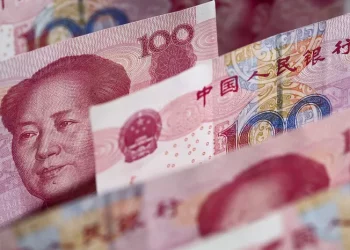The Australian Dollar (AUD) made notable gains against the US Dollar (USD) on Thursday, buoyed by the European Union’s decision to resume stalled trade talks with Australia. In a one-hour video meeting on Wednesday evening, EU Trade Commissioner Maros Sefcovic proposed a new timeline to restart discussions with Australian Trade Minister Don Farrell. These talks were initially suspended two years ago due to disagreements over agricultural access to the EU’s vast market of 450 million consumers.
The AUD/USD pair had earlier come under pressure after US President Donald Trump escalated tensions with China by increasing tariffs on Chinese imports to 125%. This development sparked concerns due to Australia’s strong trade relationship with China, which now retaliated by imposing tariffs on all US imports, raising them to 84%. Additionally, China placed six American firms—including defense contractors Shield AI and Sierra Nevada—on its trade blacklist and enacted export controls on US companies like American Photonics and BRINC Drones.
Economic indicators from China added to global concerns. China’s Consumer Price Index (CPI) dropped 0.1% year-over-year in March, following a 0.7% decline in February, falling short of expectations for a 0.1% rise. Monthly CPI inflation declined 0.4%, a deeper drop than February’s 0.2% and market forecasts. Meanwhile, the Producer Price Index (PPI) saw a 2.5% annual decline in March, worsening from the 2.2% fall recorded in February and exceeding the expected 2.3% drop.
In Australia, economic sentiment remains subdued. Both business and consumer confidence have weakened, which has led markets to anticipate more dovish monetary policy from the Reserve Bank of Australia (RBA). Market expectations now suggest a potential 100 basis point rate cut over the next few months, starting in May and possibly extending into July and August.
The AUD also faces challenges as attention shifts to the upcoming US Consumer Price Index (CPI) report, scheduled for release later Thursday. The US Dollar Index (DXY), which measures the USD against a basket of major currencies, has recently traded lower around 102.60.
In another development, President Trump announced a 90-day pause on new tariffs for most US trade partners, reducing tariffs to 10% in order to facilitate ongoing negotiations. Mark Hackett of Nationwide described the pause as a “positive sign,” adding that it offers stability in an otherwise volatile global market.
Minutes from the latest Federal Open Market Committee (FOMC) meeting revealed that US policymakers remain concerned about the risks of rising inflation and slowing growth. Despite these concerns, the Federal Reserve is maintaining a data-driven approach to policy decisions, with market participants currently pricing in only a 40% chance of a rate cut at next month’s Fed meeting.
In a further indication of shifting global trade dynamics, The Wall Street Journal reported that China is engaging with the European Union in discussions to deepen trade, investment, and industrial cooperation.
Back in Australia, both consumer and business sentiment showed signs of deterioration. The Westpac Consumer Confidence Index fell by 6% in April after a 4% increase in March, marking the first decline since January. Similarly, the NAB Business Confidence Index dropped to -3 in March from -2, reflecting the weakest reading since November. Business conditions remained slightly below average but showed modest improvement.
The AUD/USD pair, currently trading around 0.6140, has faced technical headwinds. The pair retreated from its nine-day Exponential Moving Average (EMA), and the 14-day Relative Strength Index (RSI) is below 50, reinforcing a bearish outlook. Immediate support is found at 0.5914, a level not seen since March 2020, with further support at the psychological threshold of 0.5900. On the upside, resistance levels are seen at the nine-day EMA near 0.6147 and the 50-day EMA at 0.6261. A stronger recovery could see the pair testing the four-month high of 0.6408.
Related Topics:

























